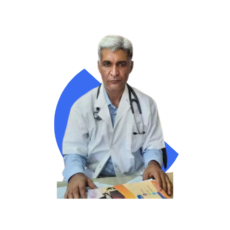
Fibroid Uterus- Abdominal Hystectomy
Fibroid Uterus- Abdominal Hystectomy –
Abdominal Hystectomy- Abdominal hysterectomy is a surgical procedure performed to remove the uterus through an incision made in the lower abdomen. It may also involve the removal of the cervix, ovaries, and fallopian tubes, depending on the specific condition being treated and the patient’s needs.
Abdominal hysterectomy is a major surgery and carries risks, as with any surgical procedure. Potential complications include infection, bleeding, blood clots, damage to surrounding organs, and adverse reactions to anesthesia.
Utero Vaginal Prolapse – Vaginal Hystectomy- Vaginal hysterectomy is a surgical procedure performed to remove the uterus through the vagina, without making an incision in the abdomen. It is a minimally invasive approach that offers several benefits, including faster recovery, fewer complications, and no visible scarring compared to abdominal hysterectomy.
Recovery after vaginal hysterectomy is generally faster compared to abdominal hysterectomy. Most patients can expect to return to their regular activities within a few weeks. It’s important to follow the surgeon’s instructions for post-operative care, including keeping the incision clean, avoiding strenuous activities, and attending follow-up appointments.
As with any surgery, there are potential risks and complications associated with vaginal hysterectomy, such as infection, bleeding, injury to surrounding organs, and adverse reactions to anesthesia.
Syptoms:
A fibroid uterus, also known as uterine fibroids or leiomyomas, is a common non-cancerous growth that develops in the muscular wall of the uterus. Fibroids can vary in size, ranging from small seedlings to large tumors that can distort the shape and size of the uterus. They are usually benign and not associated with an increased risk of uterine cancer.
- Heavy or prolonged menstrual periods
- Pelvic pain or pressure
- Frequent urination or difficulty emptying the bladder
- Back pain or leg pain
- Painful sexual intercourse
- Enlarged abdomen or visible swelling
Meet Our Doctors
